Sod or turf grass is the single most important plant in our area. Whether you have a green thumb or not, if you live in Prosper or the surrounding area, you will need to care for your sod.
The majority of sod we see in our area is warm season grass. This means that the peak growing season for these grasses is when it’s warm out (Mar-Oct). The most common warm season grasses are: Bermuda, St. Augustine and Zoysia. If you’re not familiar with these grasses, here is a basic breakdown for you:
BERMUDA SOD
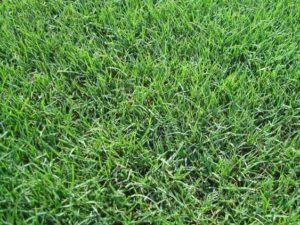
Common Bermuda is the most popular sod in the northern half of Texas and has a narrow blade.
ST. AUGUSTINE SOD
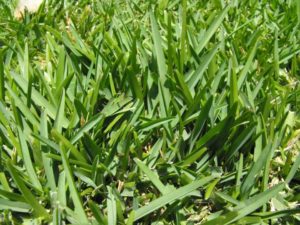
St. Augustine is more common in the southern half of Texas and is a wide blade grass.
ZOYSIA SOD
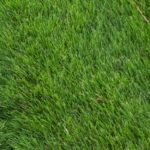
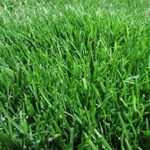
Zoysia offers many varieties, both with wide and narrow blades.
Caring for your sod may seem to be a time-consuming task, but with a few basic guidelines, your sod should need only basic maintenance to thrive year after year. The best way to care for your turf will be to first ensure that you are providing proper sunlight and water.
Sunlight
Sunlight is an essential part of growing healthy turf. The amount of sunlight your grass receives each day during the growing season will determine the kind of sod best suited for your lawn.
Bermuda: Grows best in full sun areas (more than 4 hours each day) and has very little tolerance for shade
St. Augustine: Grows best in full sun areas (more than 4 hours each day) but is also considered to be the most shade tolerant of all the warm season grasses
Zoysia: Grows best in full sun areas (more than 4 hours each day) but is more adaptable to shady areas than Bermuda.
Watering
Proper watering will help to maintain the health and growth of your warm season grasses. During the growing season, you should plan to run your sprinkler system weekly for between 10-20 minutes. Frequency and times will vary depending on your terrain, grass type and irrigation system. Check with your local water utility provider for watering recommendation and limitations.
Bermuda: Most drought-tolerant of all the warm season grasses. Water once/wk for 10-20 minutes
St. Augustine: Least drought-tolerant of the warm season grasses. Water twice/wk for 10-20 minutes
Zoysia: Fairly drought-tolerant. Water once/wk for 15-25 minutes
Once you’ve ensured your sod has the proper sunlight and water, the rest is routine maintenance. To ensure your sod’s health and encourage a dense turf, you will also need to provide it with fertilizer, regular mowing and annual aeration.
Fertilizing
Regardless of your sod type, all turf should be fertilized on a regular basis during the growing season. Spring is the perfect time to begin fertilizing your lawn. There are many services available who will not only take care of weed control, but fertilize your lawn for you. If you are doing it on your own, you should know that fertilizers come in a liquid or a granular form. The liquid fertilizers are used typically because they are less expensive and produce faster results…like applying Miracle Gro to your plants. The only downside of liquid fertilizer is that you will need to do more frequent applications to keep the green in your grass. The alternative would be to spread granular fertilizer. This is considered a “slow-release” fertilizer and it will last a lot longer. We would recommend using a granular fertilizer during the hot, summer months. When looking at your fertilizer at the store, you will see three very important numbers and/or letters: 20-5-10 NPK . The numbers represent the amount of Nitrogen-Phosphate-Potassium in the fertilizer. While there are many effective fertilizers available at your local hardware store, consider trying an organic fertilizer instead.
- Organic Granular Fertilizer: Milorganite
- Organic Liquid Fertlizer: Garrett Juice
- Homemade Organic Liquid Fertlizer: Compost Tea
For more information about the proper ratios in your lawn fertilizer, the Texas A&M Agricultural Extension is a great resource.
Mowing
Warm season grasses come out of dormancy between the middle of March and April. We typically see Bermuda greening up first followed by St. Augustine and Zoysia. Once you see the grass turning green, you should begin mowing. You can expect to mow every couple of weeks as it first comes in and out of dormancy, but these grasses should all be mown weekly during the peak growing season. Zoysia tends to grow more slowly than Bermuda or St. Augustine and needs less frequent mowing.
Bermuda: Mow at 1 ½ inches
St. Augustine: Mow at 2 – 2 ½ inches
Zoysia: Mow at 2 – 2 ½ inches
Aeration
Over time through regular mowing, leaf fall sun exposure, the top layer of your soil will develop what is known as thatch. Thatch is a layer of dead and living grass shoots, stem, debris and roots that show up between the soil and grass blades. Having this dense layer between your grass and it’s root system will essentially limit or prevent your grass from receiving the sunlight, water and fertilization that it needs. To combat thatch on your lawn, you should plan to aerate the turf each year.
Most lawn care and landscaping installation companies in Prosper TX offer this service in both the spring and the fall. An aeration machine is used to penetrate the thatch and pull up small plugs of soil. This will open the soil up again, allowing sunlight, water and fertilizers to penetrate your root system more effectively. We recommend timing the aeration with an application of fertilizer. Another good practice would be to overseed your lawn with grass seed at the same time as the aeration. With the soil opened up, adding grass seed will promote a denser turf.
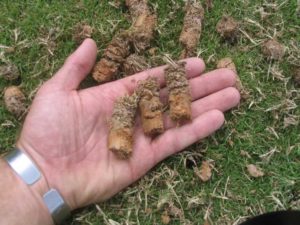
New Sod Installation
When you have large patches of dead grass or have discovered that your current warm season grass is no longer appropriate for the current sunlight in your yard, you may need to plant new sod. If you have thinning areas, adding grass seed may be the best route. However, growing grass from seed is a very time-consuming process as it requires constant moisture to transition from seed to plant. For larger areas, we recommend installing new sod pieces. New sod should be planted during the growing season. It generally tends to take up to 4 weeks for your new sod to take root. You need to make sure it’s well rooted before the dormant season. We generally stop installing sod in the middle of October.
When planting new sod, you will need to prepare the planting area by either adding a new layer of soil or tilling up the existing soil. Having a loose soil bed is ideal to allow the roots of the new sod to establish. Once the soil has been prepared, simply lay your sod pieces in an alternating or checkerboard pattern (see below). This pattern assures a tight fit and prevents excessive water runoff between the pieces.

Once the new sod pieces have been planted, proper watering is essential for the first few weeks. In order for your new sod to become rooted, it will need to be consistently moist. This moisture will encourage the roots to relax and settle into the soil. Plan to water your new sod every day for about 10 minutes. The best time to do this will be in the morning. In the evening, you may need to water the sod again if you notice it has dried out. Maintain this watering schedule for the first 2-3 weeks. After that, you can water every couple of days for the next week and then switch to your regular weekly watering schedule.
